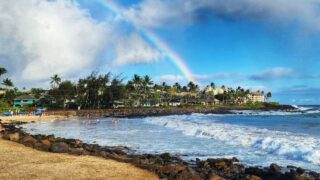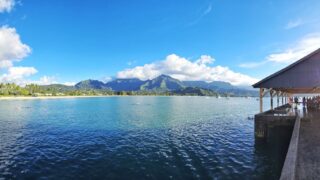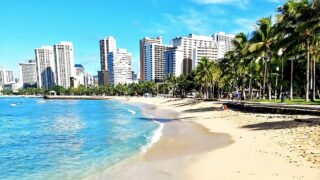Hawaii spent years and millions trying to bring back visitors from Japan, Korea, and China. However, while officials focused on yesterday’s markets, a quiet, yet innovative, new Pacific connection may reshape Hawaii’s visitor future, and almost no one noticed.
The new connection is to the Philippines. It is not splashy or subsidized. It is an interline deal between carriers that do not even compete in the same space. But it strengthens a route that has existed for decades and could reshape who arrives in the islands next.
A quiet spark.
The agreement links Southwest’s vast mainland and interisland network with Philippine Airlines’ Asia and Pacific routes. Travelers can now book single-ticket journeys through Honolulu as well as Los Angeles, San Francisco, and Seattle. A visitor from Manila can reach dozens of Southwest destinations with one itinerary and checked bags that follow the whole way.
For Hawaii residents on the neighbor islands, the benefit is a single-ticket trip that combines Southwest to Honolulu with PAL’s Honolulu–Manila nonstop, with bags checked through to the final destination. Philippine Airlines has long operated nonstop service between Honolulu and Manila, maintaining one of Hawaii’s strongest family and cultural connections.
What this partnership changes is access and convenience. It links PAL’s extensive Asia network with Southwest’s U.S. and interisland service, creating smoother travel in both directions without the need for separate reservations or baggage claims.
For Southwest, this is a small but meaningful step toward expanding its reach through international partners. For Philippine Airlines, it pushes deeper into the United States without adding new aircraft or routes of its own. And for Hawaii, it quietly builds a bridge to Asia, the very thing officials have spent years trying to recreate through marketing campaigns and conferences.
Why it matters for Hawaii.
Hawaii’s recovery from the pandemic has been almost entirely dependent on the U.S. mainland. Arrivals from Japan, Korea, and China are still at a fraction of their pre-2020 levels. The state continues to talk about diversifying, but its Asia strategy has been frozen while budgets are shrinking. Now, with no public announcement and no government involvement, this small partnership opens new access between Asia and Hawaii, especially from the Philippines, one of the state’s most strongly connected communities.
More than a quarter of Hawaii’s residents have Filipino roots, and for over a decade, they have been somewhat isolated. Hawaiian Airlines abandoned the Manila route in 2013. Philippine Airlines never filled the gap. Families have faced long, expensive journeys to visit relatives in Manila. Now two unlikely partners just fixed what Hawaii could not, and they did it without help from any tourism office or airline incentive program.
A shift in visitor mix.
Visitors from the Philippines bring a different kind of tourism to Hawaii. They are younger, family-oriented, and more likely to stay with relatives than in hotels. Their spending supports local restaurants, neighborhood shops, and interisland flights, not luxury resort spa packages. That is good for small businesses, but it is the opposite of what tourism officials promised when they said they wanted “higher-spending, lower-volume” visitors.
Meanwhile, the whole Pacific is shifting in more subtle ways. Fiji Airways is deepening its North American reach with new long-haul routes, including Dallas, while Air Tahiti Nui is scaling back, ending its Seattle service and focusing more tightly on Los Angeles. Air New Zealand and Jetstar continue to connect Australia, New Zealand, and the Cook Islands, keeping Rarotonga tied to major Pacific gateways. Honolulu remains positioned squarely in the middle of all this movement, linking legacy U.S. carriers with emerging Asia-Pacific networks.
Opportunity and challenge.
This partnership does not add new flights between Hawaii and Manila, but it expands where those flights can lead. For the first time, passengers on Philippine Airlines can book single-ticket journeys beyond Honolulu to more than a hundred Southwest destinations, and interisland travelers can connect seamlessly to PAL’s Asia network. That broader reach could quietly change Hawaii’s visitor flow in ways the state did not anticipate.
More Asia-Pacific access could ease Hawaii’s reliance on the now cooling mainland market, but it also raises questions. Hawaii’s infrastructure, workforce, and cultural readiness will need to adapt to a more diverse visitor base. Multilingual service, staff training, and better cultural understanding are important factors.
Hawaii keeps saying it doesn’t want to return to 2019 visitor levels, yet the bills still depend on tourism to get paid. More travelers will be coming from places the industry hasn’t planned for. That means frontline staff, hotels, and even policymakers must understand who these visitors are and what they need. Hawaii says it wants diversity, but the question is whether the state is actually ready for it.
Hawaii’s diversification dream.
For years, the Hawaii Tourism Authority has promised a more balanced visitor base. Ironically, a quiet airline partnership may achieve what years of other efforts have not. If more travelers begin arriving through these indirect routes, Hawaii’s visitor base could rebalance naturally, without the need for campaigns or subsidies.
It also shows another side. Hawaii’s air connectivity evolves through airline pragmatism rather than Hawaii government planning. The new bridge between Manila and Honolulu was not initiated by the HTA, but rather by two carriers working together to meet practical needs. Yet its ripple effects could reach hotels, airports, and even immigration counters before anyone is ready.
What’s next.
Whether this new path sets an example, becomes a steady pipeline, or fades away entirely will depend on bookings, pricing, and traveler demand. Interline agreements sometimes disappear as quietly as they begin, but they can also grow into full partnerships or even new routes. For a state as dependent on tourism as Hawaii, even small changes in our visitor origin can shift spending patterns, neighborhood life, and the overall balance of the visitor economy.
For now, interesting new routes are forming quietly, as the title suggests. Most travelers will not even notice the airline names on their itineraries. But soon, a family from Manila could arrive on Kauai and feel that the trip was finally simple again, and Hawaii, almost without realizing it, may have opened a new chapter in its Pacific travel story.
Hawaii wanted to diversify its visitor base. Surprisingly, it is about to get exactly that, whether it is ready or not. We welcome your comments.
Get Breaking Hawaii Travel News







With all of Hawaii’s added fee’s and such how can they even afford to do anything? You are marketing culture not affordability. There is a difference. Do they get everything free like Hawaiians even though they are tourists? Hawaii keep wishing. After the main landers leave who’s up next?
The average Filipino makes in a month what the average Hawaii hotel room costs for a night. No one from the Philippines is vacationing, let along in Hawaii….
The overwhelming response to this partnership announcement has been “meh.” It’s just an interline agreement and barely adds any convenience for Hawai’i residents, nor does it make Hawai’i a more attractive travel destination. Maybe in the future it’ll be worth something, but that’s opinion and speculation, not travel news.
It’s worth noting that the much more comprehensive partnership between Alaska/Hawaiian and Philippine Airlines, which allows booking PAL tickets through Atmos and earning miles on cash fares, wasn’t mentioned here: neither in this article nor previously. That partnership does infinitely more for island connectivity…
Regarding Hawaii’s Next Visitor Wave: I don’t foresee a big influx of visitors from Philippines
1 Philipinos have an extremely difficult time obtaining a tourist visa to USA
2 The average wage of a Philippino is below 500 Pesos a day ($10 USD)